“King of the Monsters: 60 Years of Screaming”
“You have your fear, which might become reality; and you have Godzilla, which IS reality.”
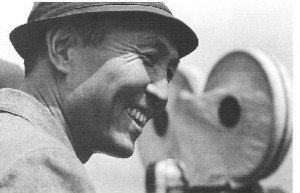
Thump. Thump. Thump. ROAR! The credits scroll as we hear the cacophony of the monster’s mighty footfalls. Gojira. Godzilla. King of the Monsters. Gigantis. Monster Zero-One. The Alpha Predator.
Giant monster movies were nothing new in 1954. “King Kong” wreaked havoc on the shores of Skull Island twenty years before. “Mighty Joe Young” frolicked with children in Tanzania. Bert I. Gordon unleashed overgrown lizards and grasshoppers in drive-ins across the country.
Ishiro Honda was a drafted soldier, a prisoner-of-war, and a civilian with a conscience. His nightmares were born of the fear of annihilation, the dropping of atomic bombs, the wholesale destruction of his beloved Japan, and then in viewing the carnage wrought by the abrupt end of the Second World War, he envisioned the vengeance of wicked hell-fire as counter-balance to the greed, corruption, and lust for power the leaders of the world demanded (and still demand).
While the Allied Forces celebrated the end of the war, our enemies were left to pick up the pieces and try to rebuild an ancient culture of beauty and balance. This is why the Gojira cycle of movies play more as prayers for peace than the calls to violence which escalated in American movies post-1941. Indeed, Honda’s movies before Godzilla were war dramas (“Eagle of the Pacific”) and romances (“The Man Who Came To Port”) usually about soldiers and their attempts to reconcile the savagery of their duty with their respective lives back home.
In many cases, the Godzilla movies simply introduced the chaotic element of a fire-breathing atomic mutant monster into these stories. The original “Gojira” was not a tome of triumph, retaliation, and retribution, but a poetic ode to desperation, alienation, nostalgia, and loss. Not your typical monster movie.
People of my generation tend to remember Godzilla in a severely truncated form. Very few of the movies in the original TOHO series made it to video and others were released direct-to-television, meaning the only time you could ever see these movies was on Saturday afternoon when the Creature Double Feature was playing back-to-back monster movies.

In fact, it was only until Australian video upstart Adult Concepts (sounds like a company that makes porno movies) released the movie on VHS in 1983 did Godzilla ever see the light of day in the burgeoning home video market. This wasn’t the original movie but an “Americanized” version featuring Canadian actor Raymond Burr and added scenes that removed the drama and pathos of Ishiro Honda’s vision, and turned the whole affair into a routine monster-chase saga. Gone was the subversion, the incompetence at national and local levels, and the forbidden love affair between Akira Takarada and Momoko Kochi. Instead we get a running commentary from the guy who killed his wife in “Rear Window”.
Honda did not direct the quickly-made “Godzilla Raids Again”. The second Godzilla movie was picked up for distribution in North America by Warner Brothers and released as “Gigantis, the Fire Monster”. The saving grace of the sequel is a much better monster suit for Godzilla; less like a goofy hand-puppet and better articulation in the arms and legs.
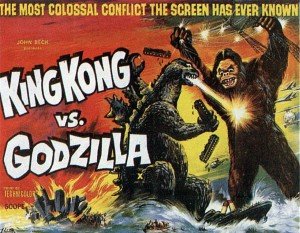
Honda returns to direct “King Kong vs. Godzilla” (1962), which then becomes the most financially successful Godzilla/Gojira movie in the whole franchise grossing ¥350,000,000 on a ¥5,000,000 budget (sounds like a lot but it’s not), as well as respectable box office internationally. This sequel saw releases on VHS, Betamax (still a popular format in Japan), Laserdisc, and the fledgling DVD market. This is due to the fact that King Kong was a much more popular character abroad than Godzilla and this movie did much to bring attention to the cinephile (I hate that word) classification of “daikaiju” or “giant strange creature”. This was also the first film in the franchise to be shot in color and widescreen format.
Akira Takarada returns in the superior “Mothra vs. Godzilla”. As silly as the premise sounds, the Mothra Twins (or the “Shobijin” as they are known): two tiny girls who sing songs of love and a cult-like devotion for the titular silk-spinner, bring a message of peace and love to us mere average-sized humans. A large egg (although it looks more like an enormous watermelon) washes up on the shore of a small town. Of course some people want to worship the egg (I don’t know precisely how you worship an egg, but if you can worship a cross…) and some people want to exploit it as a tourist attraction. This is a fun movie. Great widescreen – even some of the visual gags involving the miniature Mothra Twins look good in the widescreen process. It was only when these images were blown up for 4:3 TV screen did some of the effects look not-so-special. The ending (with Mothra’s children) spraying Godzilla with silk until he tumbles into the sea is a bit tedious.
“Ghidorah, the Three-Headed Monster” (1964) and “Invasion of Astro-Monster” (1965) effectively sidelined Godzilla in favor of some dazzling new monsters with each improving design and concept-wise on the basic Gojira premise. Ghidorah has three heads that shoot lightning and he flies with cellophane wings! The Ghidorah story continues in “Astro-Monster” wherein two astronauts, Akira Takarada and American Nick Adams land on “Planet X” where they are required to summon Godzilla and Rodan to fight Ghidorah. It’s sort of like “Bloodsport” but with giant monsters that spit fire and lightning.
“Ebirah, Horror of the Deep” or “Godzilla vs. the Sea Monster” (1966) was shot on a much smaller scale, limiting the scenes of action and devastation to the famed Monster Island where Godzilla sleeps. Survivors of a shipwreck awaken Godzilla with a bolt of lightning so he can destroy Ebirah (some kind of crab monster – stay with me on this) and a despotic, corrupt military force that uses the beast to keep the locals in line. Akira Takarada returns as a criminal who becomes a hero! This entry played only on television until 1984 when it was given a VHS/Betamax release with Adult Concepts, and was then shown on Mystery Science Theater 3000 in 1990.
“Son of Godzilla” (1967) played classic on Creature Double Feature, Saturday afternoon horror and science fiction movies on television, and is memorable for the scenes where Godzilla, ever-the-dutiful-father tries to teach Godzuki (Minilla) how to breathe fire and all that comes out of the kid is smoke rings. Again shot in glorious color and widescreen, but truncated for most North American releases, mainly television and VHS.
“Destroy All Monsters” (1968) was promoted as the last Godzilla movie to be produced (at least by TOHO) but as always seems to be the case, box office receipts dictated otherwise. It is revealed that all the monsters from previous installments have been imprisoned in a place known as Monsterland (which isn’t as fun as it sounds). A group of scientists study the monsters until a malevolent alien race of women liberate the monsters and cause them to wreak havoc all over the Earth.
It’s easy to forget that for all the kabuki acting, the bizarre monsters, and farfetched narratives, Japanese science fiction movies were decades ahead of their American counterparts when it came to production design, costumes, matte effects, and photography. American film critics dismissed the series out-of-hand.
Film critic Vincent Canby famously wrote of the 1985 New World Pictures/TOHO remake, “Godzilla, who is supposed to be about 240 feet tall, still looks like a wind-up toy, one that moves like an arthritic toddler with a fondness for walking through teeny-tiny skyscrapers instead of mud puddles.” Regardless, interest in the remake made it possible for New World Video to license several titles to the home video market, among them “Godzilla vs. Megalon”, “Godzilla vs. Gigan”, and “Godzilla vs. Mechagodzilla” (admittedly some of the sillier, later movies that transformed our favorite lizard into a superhero).
Indeed, Paramount Home Video, in their description of “Godzilla vs. Monster Zero” (“Invasion of the Astro-Monster”) says, “Even the title’s a trip! You’ll see effects so dated, so kitsch they couldn’t call them special.”
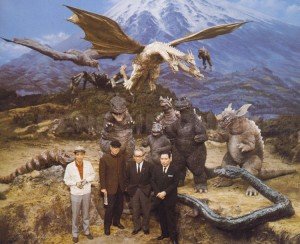
Of course, none of this can prepare you for the madness that is “All Monsters Attack” (1969), a Godzilla movie that isn’t really a Godzilla movie. It’s more an 85 minute acid trip suffered by a boy who hallucinates being given instruction by Godzilla and his son in how to deal with some local bullies while he hides from burglars. This is my daughter’s favorite of the Gojira movies as it directly addresses children. It also has a groovy theme song by Risato Saski.
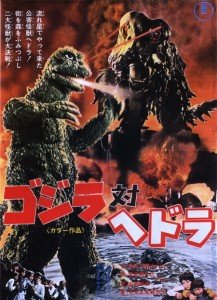
Godzilla ushers in the 70’s with a treatise on ecology and environmental concerns with “Godzilla vs. Hedorah” (or the more melodramatic title, “Godzilla vs. the Smog Monster”). While our scientists were writing thesis papers and articles in Scientific American about the threat climate change posed, Japan was already in the midst of an epidemic. Pollution was in the ocean and smog was in the air. The youth of the time were protesting. The main titles were homage to James Bond films with the beautiful Keiko Mari singing her hit song, “Save the Earth” (incorrectly, and hilariously, mistranslated as “Return! The Sun!”). Hedorah is a monster created from sea pollution and smog. Godzilla destroys it with fire, though one could question the dubious method of destroying something made from pollution with even more pollution (sort of like trashing Times Square after an Earth Day rally). The end, such as it is, shows Godzilla casting a shameful eye on all the waste and filth that has been accumulated. He looks like the Native American in those old commercials shedding a tear when he sees somebody thoughtlessly tossing garbage on the street.
“Godzilla vs. Gigan” (1972) was probably the first self-referential (or “meta”, as it known now) Godzilla movie. The movie seems to openly mock the American audience’s view of Godzilla and the kaiju cycle as a whole. A comic book illustrator stumbles onto a plan that involves aliens masquerading as the development staff of an amusement park using Godzilla and insectoid Gigan to destroy the world. The aliens are quite effective in that they appear to be human, but they cast shadows that resemble giant insects.
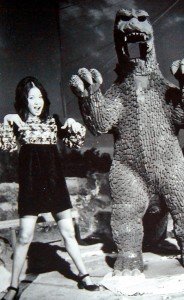
Gigan appears again in “Godzilla vs. Megalon” (1973), which features Jet Jaguar, a kind of Ultra-Man knock-off (obviously appealing to the children’s demographic) who teams with our titular hero to defeat Megalon who was unleashed by the people of Seatopia to, once again, destroy the Earth and punish us for our reliance on atmic testing and weaponry. A popular episode of Mystery Science Theater 3000 showcases the film as well as immortalizing Jet Jaguar with “The Jet Jaguar Fight Song” (a hilarious, deliberately-mistranslated anthem).
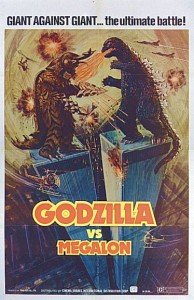
TOHO’S original Godzilla series concludes with “Godzilla vs. Mechagodzilla” (1974) and it’s sequel, “Terror of Mechagodzilla” (1975) where a strange simian race uses the robotic life-sized Mechagodzilla to, once again, destroy Earth. After so many movies in this cycle, you’d have to wonder why Earth is such a prime target, but if you can suspend your disbelief long enough, you’ll be treated to some breathtaking matte effects, incredible production value, and gorgeous photography (especially in the recent Blu-Ray releases).
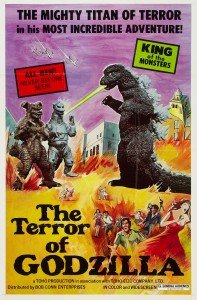
Ishiro Honda returned to direct the final installment, “Terror of Mechagodzilla”. A lot had changed in the 20 years that passed since the premiere of the first Gojira movie. Internationally, science fiction had taken off with the release of Stanley Kubrick’s “2001: A Space Odyssey”. Genre movies with bugger budgets were being produced and the Godzilla cycle had been overtaken by films it had inspired.
In a way, Godzilla seemed to be merely a vehicle for science fiction tropes (the yearning for Utopia, cloning and genetic engineering, ecology, robotics, and god concepts) and allowed for some fairly progressive ideas in culture and politics, and remember this was many years before the advent of “Star Trek” and “Star Wars”.
A new cycle of Godzilla movies started in 1984 and continued until Tri-Star’s ill-fated attempt to start a franchise with “Godzilla” (1998) starring Matthew Broderick and Jean Reno. It was little more than a “Jurassic Park” knock-off (itself heavily influenced by the first wave of Gojira movies). Gareth Edwards rebooted the franchise (with impressive results) this year and there are plans for at least two more sequels.
With DVD and Blu-Ray, the many alternate versions of Godjira/Godzilla movies can be viewed either as they were intended or in the schlocky, cheesy way we came to know and appreciate this rather petulant atomic mutant lizard. International versions (usually released in the U.K.) contained English dubbing. The movies are better viewed in the original Japanese with subtitles, or even without subtitles. In fact, it’s much more fun to watch without subtitles so you can try to figure out what the characters are saying to each other and what the story is shaping up to be.
